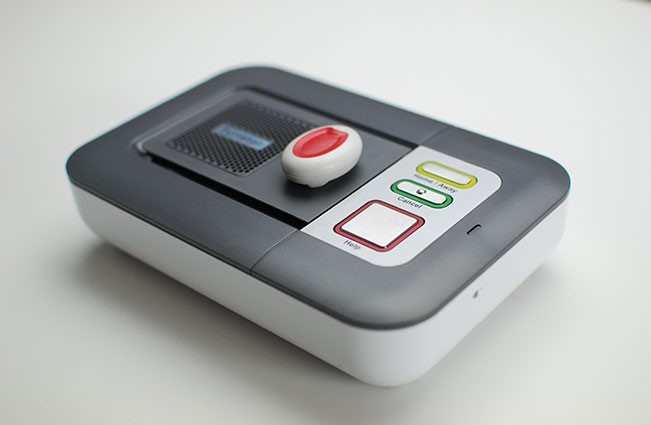6 common myths about personal alarms

Personal alarms have been designed to help older people remain living independently in the comfort of their own home. They are a great alternative to moving into a care home or having to pay for home care visits.
Personal alarms are specifically useful to those who live alone, suffer from long-term medical conditions, or are prone to falls in and around their home.
Having a personal alarm allows the user to feel more confident and secure, and gives you, as a distant carer, increased peace of mind. There is less reason to worry about what might happen if they fall or become unwell whilst they’re alone, as they can simply press their pendant button.
There are, however, some misconceptions about the service and the alarm equipment that is used. These myths about the personal alarm service may put some people off, so here are answers to some of the most common examples, to put everyone’s mind at ease.
Myth 1 – Help is only available between 9-5 on weekdays
Most monitoring teams, or care teams, work 365 days a year and are on-hand and ready to help 24 hours a day. It doesn’t matter if the user needs help first thing in the morning, in the middle of the afternoon, or in the middle of the night.
All the user has to do is push the pendant button and the care team will respond within a few seconds. Some providers also provide an online chat service, during office hours, on their website, whilst some customer service teams are available at the weekend as well.
Myth 2 – The personal alarm doesn’t work if there is a power cut
This would be a dangerous situation for alarm users, which is why the majority of modern personal alarms have a back-up battery for power cuts.
With many alarms, you can expect a back-up battery with a life of 40 hours that is also rechargeable. In the event of a power cut, the back-up battery will kick-in to ensure that the user can still press their pendant in an emergency.
Once power is restored, the back-up battery will begin to charge so that it’s ready for any future power cuts.
Myth 3 – I can’t wear my pendant button in the bath or shower
The slippery bathroom can be a hazardous place for anybody, but older people and those with health problems such as arthritis are particularly at risk. Fortunately, you can get a pendant button which is waterproof.
This means that if the person wearing it slips, trips or falls in the bath or shower, they can still press the pendant and make an alarm call to their care team. It’s waterproof, but we’d advise not submerging the pendant in water for longer than 30 minutes.
Myth 4 – Personal alarms are ugly, heavy and uncomfortable
In the past this may have been the case, but modern personal alarm systems are more compact and have been designed with comfort in mind.
Pendant buttons can weight just seven grams and are much smaller than their predecessors. Despite this, the important red buttons are more prominent. We have designed our pendant with a white finish, and we think it’s rather stylish. If you wear our pendant around your wrist it has a dark grey strap, whilst around the neck you have a white neck cord.
The discreet, small design of the pendant also means that it’s easy to tuck away under your sleeve or top.
The alarm base unit is compact and is no bigger than a regular internet router, for example.
Myth 5 – The pendant won’t work if I’m outside in the garden
Many older people like to get outside in the garden, either to look after their flowers and plants, or to play with their grandchildren. Unfortunately, illness can strike at any time, or they could slip or trip whilst they’re in the garden.
Fortunately, most modern pendants have a range of up to 100 metres. This means that alarm users are covered in and around their home.
Having a pendant means anyone can enjoy the summer with their family and maintain their garden with the knowledge that they can call for help if they need it.
Myth 6 – Personal alarms are difficult to install
Most modern personal alarms are plug-and-play devices which you or your loved one can install within a few short minutes:
- Plug the base unit into the mains power and existing telephone socket
- Connect the telephone to the back of the base unit using the adapter provided
- Press the red help button on the base unit to begin a test call with their care team
This is all that’s needed. Once this is done, they’ll be connected to your care team and can find help at a push of a button.
Personal alarms for your older family and friends
We hope that the information above has removed any concern or doubts about the personal alarm service. The modern personal alarm is designed with speed, comfort and simplicity in mind.
Having an alarm may mean that a loved one can remain in the comfort of their own home, while providing everyone with peace of mind.
This article was contributed by Lifeline24.

